描述
改性聚甲醛树脂材料
1)聚甲醛20%玻璃纤维,具有优异的机械强度
2)POM 20%玻璃纤维,用于承载高硬度强度
3)POM 20%玻璃纤维,具有高耐磨性
4)轴承自润滑用POM 20%玻璃纤维
5)POM 20%玻璃纤维,用于承载更高的模量
6)POM 20%玻璃纤维,用于耐化学腐蚀等。
改性聚甲醛树脂材料
产品详细信息
改性聚甲醛树脂材料
聚甲醛工艺特性
1。熔点明显
聚甲醛是一种无支链、高密度、高结晶度的线性聚合物,具有明显的熔点。当温度未达到熔点以上时,树脂在长时间加热时不会熔化
2。高结晶度和大体积收缩率
聚甲醛的结晶度高达70%~80%,这不仅对成型过程中树脂的熔融有很大影响,而且需要吸收大量热量,对产品的成型有很大影响。当熔体从熔融状态变为固态时,体积收缩率远大于其他塑料(当熔体在室温下从熔点以上30°C冷却到25°C时,体积变化为21%,聚乙烯、聚丙烯、尼龙6为16%,聚苯乙烯仅为4%)。因此,在加工厚壁产品时,必须进行充分的喂料
3。热稳定性差
聚甲醛在240°C的温度下会严重分解,颜色会变黄。在210℃的温度下,停留时间不得超过20分钟。即使在正常的加工温度范围内,它也会在较长的加热时间后分解。因此,在保证材料流动性的前提下,应尽量采用较低的成型温度和较短的加热时间
4。快速凝固
聚甲醛的凝固温度约为160°C,凝固速度快于熔点。当温度略低于熔点时,会形成晶相,具有一定的硬度和表面硬度,可以快速脱模,缩短冷却时间。由于凝固速度快,产品表面容易出现褶皱、条纹、焊缝等缺陷,应采取相应的措施进行补救,如提高注射速度、提高模具温度、改善模具结构等
5。低吸水率
聚甲醛的吸水率约为0.25%,水分的存在对其性能和成型过程几乎没有影响。因此,成型前无需进行干燥处理,但当颗粒表面吸附水分时,有利于改善产品外观,或需要干燥
6。流变学聚甲醛的熔体粘度对温度不太敏感,更依赖于剪切应力。因此,为了提高其流动性,不需要提高加工速度,而要提高注射速度,改善模具结构,控制模具温度,等等。
< B/> > < BR>> < P> < /P> < P> < /P> > P> < P> < /P> < P> < SPA>接触>表面细化>
是一家专业的改性聚甲醛树脂材料制造商,您可以从我们工厂以优惠的价格订购高品质的改性聚甲醛树脂材料
Modified POM Resin Material
1)POM 20% Glass Fiber for Bearing Excellent mechanical strength;
2)POM 20% Glass Fiber for Bearing High hardness strength;
3)POM 20% Glass Fiber for Bearing High wear resistance;
4)POM 20% Glass Fiber for Bearing Self-lubrication;
5)POM 20% Glass Fiber for Bearing Higher modulus;
6)POM 20% Glass Fiber for Bearing Chemical resistance and etc.
Modified POM Resin Material
Product Details
Modified POM Resin Material
POM process characteristics
1. The melting point is obvious
POM is a non-branched, high-density, high-crystalline linear polymer with an obvious melting point. When the temperature does not reach above the melting point, the resin will not melt when heated for a long time.
2. High crystallinity and large volume shrinkage
The crystallinity of polyoxymethylene is as high as 70% ~ 80%, which not only has a great impact on the melting of the resin during molding, but also needs to absorb a lot of heat, and has a great impact on the molding of the product. When the melt changes from molten state to In the solid state, the volume shrinkage rate is much larger than that of other plastics (when the melt is cooled from 30 ° C above the melting point to 25 ° C at room temperature, the volume change is 21%, polyethylene, polypropylene, nylon 6 is 16%, and polystyrene is only 4%). Therefore, when processing thick-walled products, sufficient feeding must be carried out.
3. Poor thermal stability
Polyoxymethylene will decompose seriously at a temperature of 240°C, and its color will turn yellow. At a temperature of 210*C, the residence time cannot be 20 minutes. Even within the normal processing temperature range, it will decompose after a longer heating time. Therefore, on the premise of ensuring the fluidity of the material, a relatively low molding temperature and a short heating time should be used as much as possible.
4. Fast solidification
The solidification temperature of polyoxymethylene is about 160°C, and the solidification speed is faster than the melting point. When the temperature is slightly lower than the melting point, a crystalline phase will be formed and have a certain rigidity and surface hardness, so it can be quickly demolded and the cooling time can be shortened. Due to the fast solidification speed, defects such as wrinkles, streaks, weld lines, etc. are easy to occur on the surface of the product, which should be remedied by corresponding measures, such as increasing the injection speed, increasing the mold temperature, and improving the mold structure.
5. Low water absorption
The water absorption of polyoxymethylene is about 0.25%, and the presence of moisture has little effect on its performance and molding process. Therefore, it is not necessary to do drying treatment before molding, but when the surface of the particles adsorbs moisture, it is beneficial to improve the appearance of the product , or need to be dried.
6. Rheology
The melt viscosity of polyoxymethylene is less sensitive to temperature and more dependent on shear stress. Therefore, to increase its fluidity, it is not necessary to increase the processing temperature, but to increase the injection speed, improve the mold structure, control the Consider the mold temperature, etc.
Contactnowformoredetailsabout Modified POM Resin Material.
is one of the professional modified pom resin material manufacturers, you can order high quality modified pom resin material at good price from our factory.






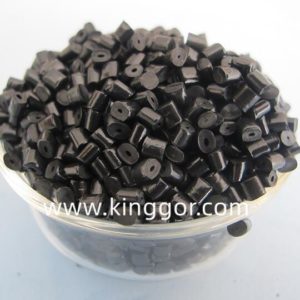
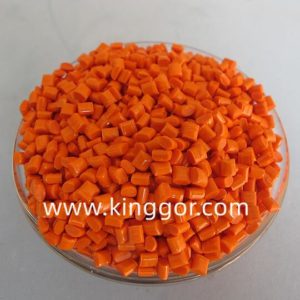


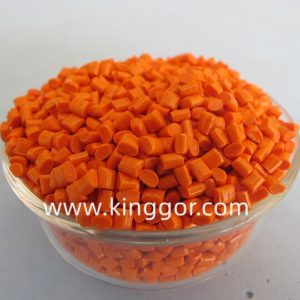
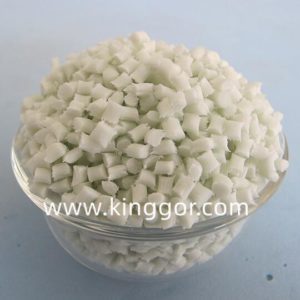




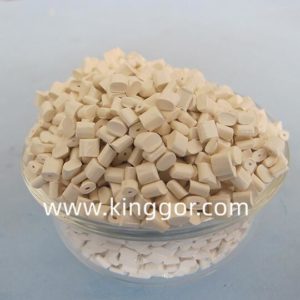



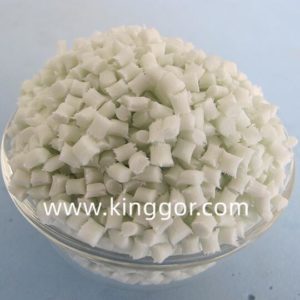

评价
目前还没有评价